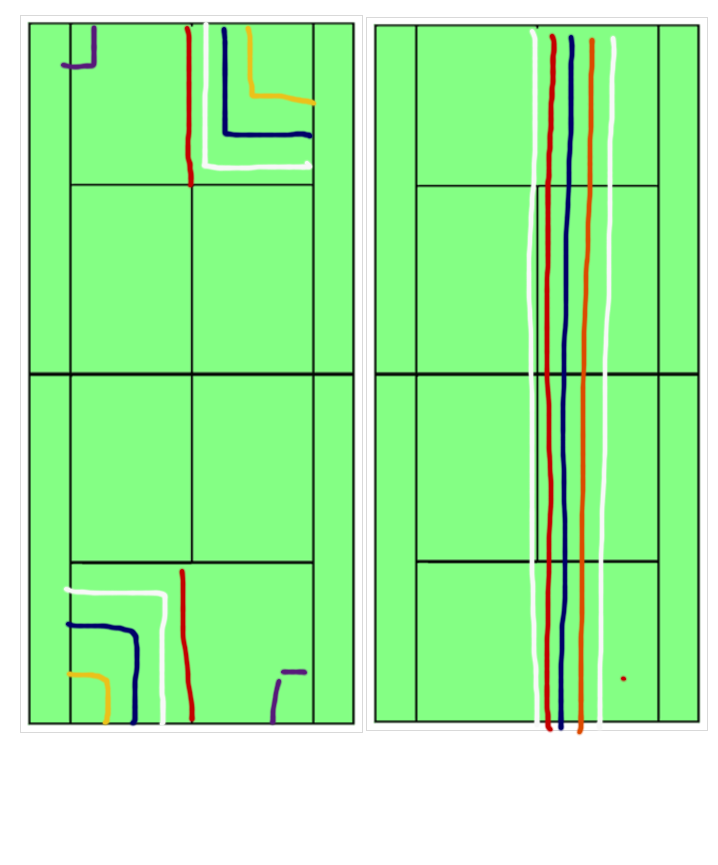What's WRONG with YOU?!
 Sunday, November 13, 2011 at 12:20PM
Sunday, November 13, 2011 at 12:20PM  CAtennis
CAtennis How many times have you, as a parent or coach, asked your child or student this question? Instead of focusing on the player, it may be becoming for the inquirer to look at himself first. When it comes to relationships, we've often heard the importance of chemistry. Chemistry is the ingredient that attracts two people to each other. Although chemistry can take many forms, from a tennis point of view, it's the ability to complement and supplement each other's qualities and characteristics that is significant. And here is where an understanding of various personalities comes into play. But rather that starting with the student, it may be important for the teacher to look at him/herself first in order to figure out his/her strengths, weaknesses, likes, dislikes, motivations as well as emotional and logical characteristics. We all see ourselves as certain people, with specific characteristics. However, the way we perceive ourselves is not always the same as we come across to other people. Often times, on-court clashes can be avoided by understanding the personality conflicts of the various parties.
 In this regard, I recommend that both pros and players (and perhaps parents as well) take a basic Jung-Myers Briggs personality test and summarize each other's specifications. I recommend the test and analysis on www.humanmetrics.com although many other online tests may be of similar quality. After taking the test, the coach will have a better understanding of who s/he is as a person and how the coach comes across to his/her students. Thereafter, it is important for the coach to understand the game of tennis from the player's point of view by looking at the player's personality profile. For example, is the player more rational than emotional? Is the player the type who can stay focused for long periods of time on specific tasks? Is the player a natural leader? Is the player rigid v. flexible? Does the player like to be the center of attention? Does the player have the tendency to get bogged down by stress? Is the player sensitive to other people's feelings? Is the player energetic? Does the player have an adventurous spirit (i.e., action oriented)? Does the player live in the world of ideas and strategic planning? Is the player interested more in the theoretical concepts of endeavors v. the practical application?
In this regard, I recommend that both pros and players (and perhaps parents as well) take a basic Jung-Myers Briggs personality test and summarize each other's specifications. I recommend the test and analysis on www.humanmetrics.com although many other online tests may be of similar quality. After taking the test, the coach will have a better understanding of who s/he is as a person and how the coach comes across to his/her students. Thereafter, it is important for the coach to understand the game of tennis from the player's point of view by looking at the player's personality profile. For example, is the player more rational than emotional? Is the player the type who can stay focused for long periods of time on specific tasks? Is the player a natural leader? Is the player rigid v. flexible? Does the player like to be the center of attention? Does the player have the tendency to get bogged down by stress? Is the player sensitive to other people's feelings? Is the player energetic? Does the player have an adventurous spirit (i.e., action oriented)? Does the player live in the world of ideas and strategic planning? Is the player interested more in the theoretical concepts of endeavors v. the practical application?
In other words, in order to teach a player you must understand the player. And in order to achieve this objective the coach must first understand himself and his own personality portrait. Too many coaches (and parents) think that there's one way to teach a student - "come h$#@ or high water"; "my way or the highway" - and cannot understand why the player doesn't see things their way. As any good educator will tell you, not every student thinks the same or can be taught the same (but, then again, the vast majority of pros - certified or certifiable - have no background in education). For example, some players view the game of tennis as a battle of wits...a strategic affair; others see it more as a personal, gladiatorial contest; others still see it as a scientific experiment. And then there are those who see the tennis court as a canvas and the game as art. They are all right since tennis is all these things (and more). In addition, it is important to note that some players (like students) thrive in a group setting; others, may become disoriented with too many people around and lose focus. Furthermore, some players may be interested in the theoretical aspects of the game; other players are more interested in the practical approach (perhaps, these latter players are the "competitive" types). Lastly, there are those who need to be on center court in order to perform their best (i.e., be the center of attention) while there are others who like to grind their practices on the back-courts...away from public scrutiny.
As a good coach, it's important to either (a) modify (if only slightly) your method to fit the student; or (b) if unable to do so, advise the player to seek assistance somewhere else. Anything less is a great disservice to either the player or the parents and will result in frustration and dissatisfaction on all sides. Of course, some coaches and players will have a natural fit due to their personality match. That's great when it happens. But if that aspect isn't present, don't be too quick to blame the player. Understand her and yourself and work together towards a workable solution or guide her towards someone who may be a better fit.
NOTE: FOR ADDITIONAL REFERENCE, SEE ALSO http://parentingaces.com/2011/12/02/energize-your-childs-tennis-game/




